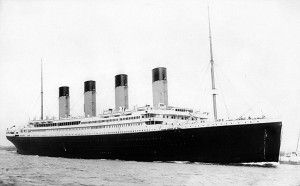On the cusp of graduation, I’ve had two major realizations in college.
One: most of America’s worst economic crises have been a result of financial obscurity. The first major crash in my lifetime was in the tech bubble of the early 2000s, where Wall Street traders were overrating the quality of Internet stocks. Once the broader market realized this, the values of many tech companies were obliterated. Millions of investors exposed to this sector lost their entire investments because they were unaware of these misrepresentations. In the most last recession, where lenders were underrating the riskiness of homeowners and financial institutions were securitizing riskier-than-advertised mortgages, millions of investors lost their entire investments yet again because they were unaware of further misrepresentations.
Two: economic history repeats itself, even if as a society, we might be aware of this pattern. Taking these two market crises as an example of this bleak fact about our species, it seems that we’ll always have the shortest of memories. In this case, history repeated rather quickly – twice in the span of a decade. Is it possible that people are cognizant of a recurring mistake before it happens, even if it’s happened before in their lifetimes? Most likely not, if the last recession is any example. A significant number of real estate professionals, banking gurus, and regulators were responsible for inflating a price bubble in the housing market, even though some fraction should have been economically conscious enough to understand the problems that would eventually arise.
The question then remains: is there a way to solve both of these problems, assuming the best of all possible worlds? Yes. Imagine a place where peoples’ understandings of basic economics and financial practices was commonplace, where a homeowner and a lender had an equal comprehension of a mortgage, where a hard-working breadwinner knew the dangers of payday loans, and where a child could sit side-by-side with his or her parents while overseeing family finances. All of these possibilities – and more – can come into fruition if we as individuals place a greater emphasis on financial awareness. Note: I don’t say “financial learning” because all of these concepts are innate to us, though hidden by verbiage and stigma. Whether we like it or not, if our career is in finance or not, we must come to terms with the economic world that surrounds us.
If we are lucky, a societal “financial flowering” may just reduce the severity of future crises, and will definitely place more dollars in the pockets of our grandchildren. Just think, if we are able to teach future generations about the dangers of debt, or the linkages between well-being and sound investing practices, our world will be a better place. For lack of a better cliché, this is not rocket-science, which is why it is actually possible. I work for WealthLift, a company that teaches novice investors how to evaluate and trade stocks, while providing them with educational lessons about topics such as hedge funds, the Federal Reserve, and retirement planning. I hope that more people will try to make a difference in the realm of financial clarity, because it is an issue that affects us all.
At the end of the day, our lives are a factor of the number of Greenbacks we hold, whether we like it or not. I want to raise my children in a culture that has a better grasp on these issues, not for wealth or power, but for peace.





